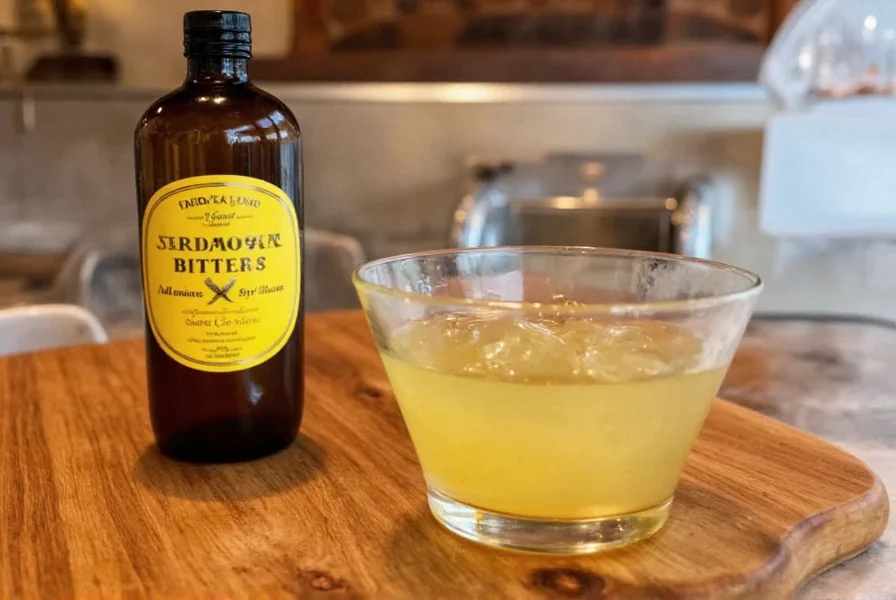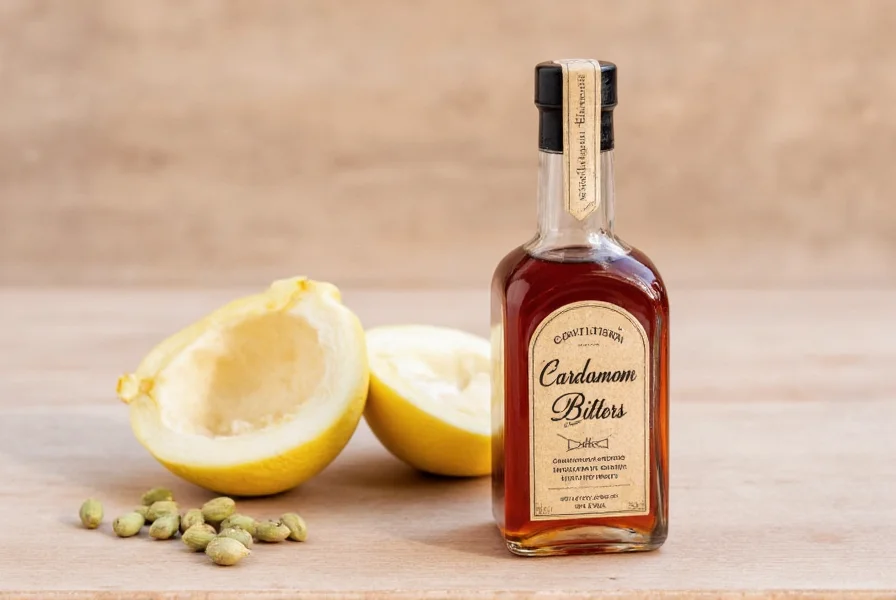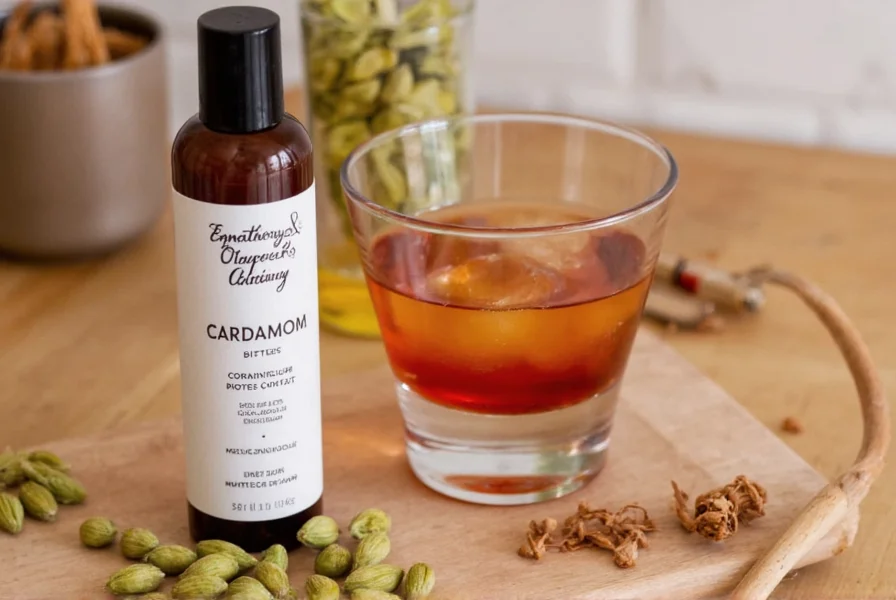Cardamom bitters have emerged as a sophisticated addition to the modern mixologist's toolkit, offering a unique flavor dimension that elevates both alcoholic and non-alcoholic beverages. These specialized bitters capture the essence of cardamom—a spice long cherished in Scandinavian and Middle Eastern cuisines—through a careful extraction process that preserves its delicate aromatic compounds.
The Science Behind Cardamom Bitters
Understanding how cardamom bitters work requires examining their chemical composition. Cardamom contains terpenes like α-terpineol and limonene that create its distinctive citrus-floral aroma. When cardamom pods steep in high-proof alcohol (typically 95-100 proof), these volatile compounds dissolve into the solution, creating a concentrated flavor extract. The alcohol serves dual purposes: as a solvent to extract flavor compounds and as a preservative that maintains potency for years.
Unlike mass-produced cocktail bitters that often contain artificial flavors and excessive sugar, quality cardamom bitters maintain a balanced bitterness-to-flavor ratio. The ideal formulation contains approximately 35-45% alcohol, with minimal added sweeteners, allowing the authentic cardamom character to shine through without cloying sweetness.

Culinary Applications Beyond Cocktails
While cocktail enthusiasts prize cardamom bitters for their mixology potential, their applications extend far beyond drinks. Chefs incorporate these bitters into:
- Dessert sauces and custards (2-3 dashes per cup)
- Marinades for poultry and game meats
- Infused simple syrups for specialty coffee drinks
- Enhancing chocolate-based confections
- Non-alcoholic sparkling beverages
When using cardamom bitters in cooking, remember that less is more—typically 2-4 dashes suffice to transform a dish without overwhelming other flavors. The bitters work particularly well with ingredients like apricot, pistachio, rosewater, and dark chocolate, creating sophisticated flavor pairings that elevate everyday recipes.
Cardamom Bitters vs. Other Specialty Bitters
| Bitters Type | Primary Flavor Notes | Best Cocktail Pairings | Dosage Recommendation |
|---|---|---|---|
| Cardamom | Floral, citrus, warm spice | Old Fashioneds, Gin Martinis, Smoky Whiskey Drinks | 2-4 dashes |
| Orange | Citrus peel, slight bitterness | Manhattans, Margaritas, Champagne Cocktails | 2-3 dashes |
| Aromatic | Herbal, spice blend, gentian root | Classic Cocktails, Whiskey Sours | 2 dashes |
| Chocolate | Rich cocoa, vanilla | Rum Cocktails, Milk Punches | 3-4 dashes |
This comparison of cardamom bitters flavor profile versus other specialty bitters reveals why mixologists increasingly reach for cardamom when crafting complex, layered cocktails. The distinctive warm spice notes complement rather than compete with base spirits, particularly brown spirits like bourbon and aged rum.
Creating Your Own Cardamom Bitters at Home
For those interested in how to make cardamom bitters, the process is surprisingly accessible. A basic homemade cardamom bitters recipe requires:
- 1 cup high-proof neutral spirit (100 proof vodka or grain alcohol)
- 15-20 green cardamom pods, lightly crushed
- 1 cinnamon stick
- 3 whole cloves
- 1/4 teaspoon black peppercorns
- 1/4 cup water
- 1 tablespoon honey or simple syrup (optional)
Combine all ingredients except water and sweetener in a glass jar. Seal tightly and store in a cool, dark place for 14-21 days, shaking daily. After steeping, strain through a coffee filter, then mix with water and optional sweetener. Allow the mixture to rest for another week before use to let flavors mellow and integrate. Properly stored in amber glass dropper bottles, homemade cardamom bitters maintain quality for 18-24 months.

Historical Context and Modern Revival
Cardamom's journey from ancient spice trade routes to contemporary cocktail bars spans millennia. Originating in India's Western Ghats, cardamom traveled along trade routes to Scandinavia, where it became integral to Nordic baking traditions. The use of cardamom in alcoholic beverages dates to medieval Europe, where spiced wines and aquavits incorporated the prized spice.
The modern craft cocktail renaissance has revived interest in cardamom bitters, with pioneering mixologists recognizing its potential to add complexity without sweetness. Unlike many commercial bitters that prioritize shelf stability over flavor authenticity, artisanal cardamom bitters capture the spice's delicate floral notes that mass producers often lose in processing.
Storage and Shelf Life Considerations
Proper storage ensures your cardamom bitters maintain their distinctive flavor profile. Always store in amber or cobalt glass bottles to protect from light degradation. Keep bottles tightly sealed in a cool, dark place away from temperature fluctuations. Quality cardamom bitters typically remain at peak flavor for 18-24 months when properly stored.
Signs that cardamom bitters have degraded include:
- Noticeable separation of ingredients
- Faded color (should maintain rich amber hue)
- Loss of characteristic floral aroma
- Development of off-flavors or mustiness
Unlike many cocktail ingredients, cardamom bitters don't require refrigeration due to their high alcohol content, making them exceptionally convenient for both professional and home bartenders seeking reliable how to use cardamom bitters in cocktails guidance.
Frequently Asked Questions
What makes cardamom bitters different from regular bitters?
Cardamom bitters feature cardamom as the primary botanical, delivering distinctive floral, citrus, and warm spice notes absent in traditional aromatic bitters. Unlike many commercial bitters that rely on gentian root as the bittering agent, quality cardamom bitters derive their bitterness naturally from the cardamom pods themselves, resulting in a more complex flavor profile with less medicinal aftertaste.
Can I substitute cardamom bitters if I don't have them?
While not a perfect substitute, you can approximate cardamom bitters by combining equal parts orange bitters and allspice dram, adding a tiny pinch of ground cardamom. For non-alcoholic alternatives, steep crushed cardamom pods in hot water for 10 minutes, then cool and use 1/4 teaspoon of the infused water per dash of bitters required. Note that substitutes won't replicate the exact flavor complexity of authentic cardamom bitters.
How many dashes of cardamom bitters should I use in cocktails?
Most cocktail recipes call for 2-4 dashes of cardamom bitters. Start with 2 dashes in spirit-forward cocktails like Old Fashioneds, and increase to 3-4 dashes in more complex drinks with multiple ingredients. When experimenting with homemade cardamom bitters recipe creations, add bitters incrementally, tasting after each addition, as potency can vary between homemade and commercial products.
Do cardamom bitters have any digestive benefits?
Traditional medicine systems have long used cardamom to support digestion, and while modern cardamom bitters contain only small amounts of the spice, they may provide mild digestive benefits when consumed in moderation as part of a cocktail or digestive aid. The bitter compounds naturally stimulate digestive enzymes, potentially aiding digestion—though they shouldn't be considered a medical treatment for digestive issues.
Which spirits pair best with cardamom bitters?
Cardamom bitters complement brown spirits exceptionally well, particularly bourbon, rye whiskey, and aged rum. They also enhance gin's botanical profile and work beautifully with Scandinavian aquavits. Avoid pairing with delicate white spirits like vodka or light tequila, where the cardamom flavor might overwhelm the base spirit. For best results in exploring cardamom bitters flavor profile, try them in an Old Fashioned or a Nordic-inspired gin cocktail.











 浙公网安备
33010002000092号
浙公网安备
33010002000092号 浙B2-20120091-4
浙B2-20120091-4